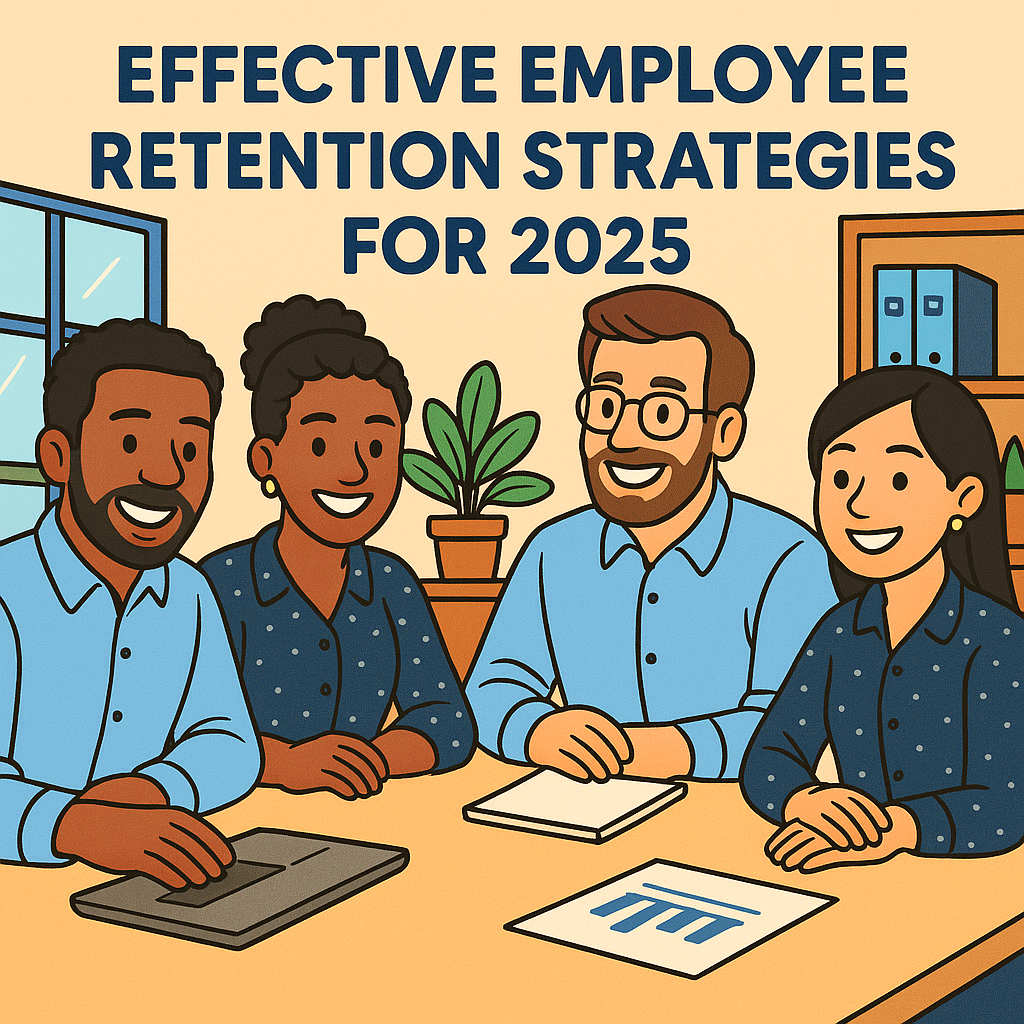Employee retention depends on trust, fair compensation, meaningful work, and opportunities for growth. The best strategies balance company goals with employee needs. Effective retention programs are data-informed, flexible, and tailored to each organization’s unique workforce.
Why Employee Retention Matters
In today’s competitive labor market, retaining employees has become one of the most important challenges for organizations of all sizes. As industries evolve and workplace expectations shift, employees have more options than ever—and companies that fail to adapt risk losing top talent. High turnover doesn’t just affect staffing levels; it impacts productivity, morale, client relationships, and even an organization’s reputation. Replacing a single employee can cost up to twice their annual salary once recruitment, training, and lost output are factored in, and the disruption can ripple through teams for months.
Retention is about more than keeping headcount stable—it’s about building a workplace where employees feel valued, supported, and motivated to stay for the long term. When people believe their contributions matter and see opportunities for advancement, they are far more likely to remain engaged and committed to their organization’s mission.
Core Principles of Employee Retention
Modern retention research highlights that long-term engagement depends on three main elements:
- Connection: Employees who feel valued and included are more likely to remain.
- Alignment: When personal values, goals, and skills match organizational priorities, employees feel a sense of purpose.
- Opportunity: People stay longer when they see clear paths for growth and development.
These principles apply across industries, though how they’re implemented varies depending on company size, workforce demographics, and business model.
Practical Strategies to Improve Retention
- Strengthen Leadership and Management Skills
Poor management is consistently cited as a top reason for turnover. Providing leadership training that emphasizes empathy, communication, and accountability helps create stronger teams and healthier workplace relationships.
- Provide Clear Growth Opportunities
Employees are more likely to stay when they understand how they can progress. Regular performance discussions, skill development programs, and transparent promotion criteria help people see a future within the organization.
- Offer Competitive and Fair Compensation
Pay alone doesn’t guarantee loyalty, but inequitable or below-market pay often drives people away. Regular compensation reviews, transparent pay structures, and performance-linked incentives can build trust and fairness.
- Recognize Contributions Meaningfully
Recognition doesn’t need to be extravagant. Simple, specific appreciation—public or private—reinforces positive behavior and shows employees their work is valued.
- Encourage Flexibility Where Possible
Flexible scheduling, hybrid work options, or alternative arrangements help balance work and personal life. Even in industries where remote work isn’t possible, flexibility in shifts or hours can improve satisfaction.
- Support Well-Being and Work-Life Balance
Mental health programs, wellness initiatives, and time-off policies contribute to sustainable performance. Employees who feel supported are less likely to experience burnout or disengagement.
- Use Data to Identify Retention Risks
HR analytics can reveal patterns—such as declining engagement or increased absenteeism—that predict turnover. Data-driven decisions allow organizations to address potential problems early.
- Foster an Inclusive and Respectful Culture
Inclusive cultures tend to have lower turnover. Ensure policies promote equity, open communication, and a sense of belonging across all roles and levels.
Common Mistakes to Avoid
- Relying solely on perks: Tangible benefits like snacks or office games rarely influence long-term retention.
- Ignoring feedback: If employees express concerns and see no action, trust erodes quickly.
- Assuming all employees are motivated by the same things: Motivation varies across generations, job types, and personal goals.
- Neglecting development: Without growth, even satisfied employees may eventually leave.
Key Takeaways
- Retention starts with fair treatment, trust, and open communication.
- Recognition, growth, and flexibility are stronger motivators than perks.
- Data helps predict and prevent turnover, but personal connection is what sustains engagement.
- Effective retention programs evolve with the workforce and market conditions.
FAQ
Q: What’s the most effective way to retain employees?
A: There’s no universal solution. The most effective programs combine competitive pay, development opportunities, and strong leadership.
Q: Can flexible work arrangements improve retention?
A: Yes. Flexibility—whether in location, hours, or workload—consistently ranks as a key factor in job satisfaction.
Q: How often should companies reassess retention strategies?
A: Ideally, every 6–12 months. Regular reviews help adapt to market trends and workforce changes.

